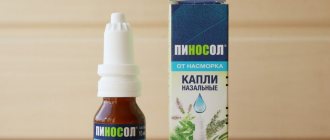Contraindications
The use of Isoniazid is contraindicated, regardless of the route of administration, in case of intolerance to the drug, epilepsy and other diseases accompanied by a tendency to seizures, in the case of previous polio, impaired renal and liver function, severe atherosclerosis.
The use of the drug in a dose of more than 10 mg/kg is contraindicated during pregnancy, pulmonary heart failure of the III degree, hypertension of the II-III degree, coronary heart disease, widespread atherosclerosis, diseases of the nervous system, bronchial asthma, psoriasis, eczema in the acute phase, cirrhosis of the liver , myxedema. Intravenous administration of isoniazid is also unacceptable for phlebitis.
Drug interactions Isoniazid
When used simultaneously with paracetamol or other potentially hepatotoxic drugs, the risk of hepatotoxicity increases. Concomitant use with neurotoxic agents may have additive neurotoxic effects. Long-term use of isoniazid may reduce plasma clearance and increase the duration of action of alfetanil. Antacids, especially those containing aluminum, may slow down and reduce the absorption of isoniazid from the intestine; the interval between their administration should be at least 1 hour. Isoniazid can potentiate the effects of indirect anticoagulants and inhibit the metabolism of benzodiazepines. With the simultaneous consumption of certain types of cheese (Swiss) or fish (sardinella, tuna), hyperemia and itching of the skin, a feeling of heat, headache or dizziness are possible due to isoniazid suppressing the activity of MAO and diamine oxidase in the blood plasma and disrupting the metabolism of tyramine and histamine. When used simultaneously with GCS, the metabolism and elimination of isoniazid may increase. With the simultaneous use of isoniazid with ketoconazole, the concentration of the latter in the blood may decrease. Isoniazid inhibits the metabolism of phenytoin and theophylline.
Directions for use and doses
Isoniazid is used intravenously, intramuscularly, in the form of inhalations, and possibly intracavernous administration. The daily and course doses of isoniazid are set for each patient individually, depending on the nature and form of the disease, the degree of inactivation and tolerability of the drug.
Intravenous isoniazid is administered for the treatment of widespread pulmonary tuberculosis, with massive bacterial excretion, concomitant diseases of the gastrointestinal tract, and in patients who avoid taking the drug orally. Adults and adolescents are administered slowly in drops of 10-15 mg per 1 kg of body weight per day. The course of treatment, depending on the effectiveness of therapy and tolerability of the drug, is 30-50 infusions. To prevent side effects when administering isoniazid intravenously, vitamin B6 (pyridoxine) and glutamic acid are used. Pyridoxine is administered intramuscularly 100-125 mg 30 minutes after administration of Isoniazid, or prescribed orally 60-100 mg every 2 hours after intravenous administration of Isoniazid. Glutamic acid is taken in a daily dose of 1 to 1.5 g. After intravenous administration of the drug, bed rest is required for 1-1.5 hours.
Adults and adolescents are administered intramuscularly in a 10% solution at 5-12 mg/kg per day for 2-5 months. To reduce the side effects of this route of administration, pyridoxine is prescribed orally along with the administration of Isoniazid at a dose of 60-100 mg (can also be administered intramuscularly 30 minutes after Isoniazid at a dose of 100-125 mg/kg).
In order to reduce side effects, in addition to the above-mentioned pyridoxine and glutamic acid, 1 ml of thiamine bromide (6% solution) or thiamine chloride (5% solution) is administered intramuscularly, and the sodium salt of ATP is prescribed.
Inhalation isoniazid is prescribed in 1-2 doses in a 10% solution.
The daily dose is 5-10 mg per 1 kg of body weight. Inhalations are used daily for 1-6 months.
Mainly for adults with fibrous-cavernous and cavernous forms of tuberculosis, with bacterial excretion and in the preoperative period, a 10% solution of the drug in a daily dose of 10-15 mg/kg is administered intracavernously.
Pharmacological properties of the drug Isoniazid
Isoniazid (isonicotinic acid hydrazide) is a synthetic anti-tuberculosis agent with bactericidal action that has high activity against many mycobacteria, especially actively dividing ones. At a concentration of 0.03 mcg/ml, it inhibits the growth of Mycobacterium tuberculosis and has little effect on the causative agents of other infectious diseases. It is assumed that the mechanism of action is due to the ability to suppress the synthesis of mycolic acid and, as a consequence, disruption of the structure of the outer cell membrane of sensitive microorganisms. It is well absorbed from the digestive tract, but may undergo significant first-pass metabolism when passing through the liver. Concomitant food intake reduces the absorption of isoniazid. After oral administration, the maximum concentration in the blood plasma is achieved within 1–4 hours, and the tuberculostatic concentration after administration of a single dose lasts 6–24 hours. Widely distributed in tissues and body fluids, including CSF, pleural effusion, ascitic fluid, skin, lungs, sputum, saliva, caseous masses. Volume of distribution - 0.57–0.76 l/kg. Plasma protein binding is very low - 0–10%. Penetrates the placenta and is excreted in breast milk. In the liver it is acetylated to form N-acetylisoniazid, then converted to isonicotinic acid and monoacetylhydrazine. The latter has a hepatotoxic effect due to the formation of an active intermediate metabolite. The rate of acetylation is genetically determined and determined by the level of N-acetyltransferase activity. The half-life in adults, including the elderly, with rapid acetylation is 0.5-1.6 hours, with slow acetylation - 2-5 hours, and with liver failure can increase to 7 hours. In newborns, the half-life is 7.8- 19.8 hours, in children aged 1.5-15 years - 2.3-4.9 hours. Excreted by the kidneys, mainly in the form of inactive metabolites (75-95% of the administered dose is excreted in the urine within 24 hours); a small amount is excreted in the feces.
Interaction with other drugs
If necessary, isoniazid is prescribed in combination with other anti-tuberculosis drugs - antibiotics, sulfonamides (except cycloserine).
With the simultaneous use of Isoniazid with drugs that have hepatotoxic properties, the likelihood of hepatotoxic reactions increases. When used simultaneously with rifampicin, the risk of developing these reactions increases (especially in people with impaired liver function and in patients with alcoholism). When used simultaneously with paracetamol, the risk of hepatotoxicity increases. With the simultaneous use of isoniazid with carbamazepine or phenytoin, the metabolism of the latter is suppressed, which leads to an increase in their concentrations in the blood plasma and increased toxic effects. To prevent the development of these phenomena, pyridoxine and glutamic acid are prescribed.
Cautions
Simultaneous consumption of alcohol increases hepatotoxic reactions.
Side effects of the drug Isoniazid
dizziness, headache, irritability, euphoria, sleep disturbance, paresthesia, peripheral neuritis with muscle atrophy and paralysis of the limbs, optic neuritis (blurred or loss of vision with or without pain in the eye), psychosis, increased seizures in patients with epilepsy, palpitations , chest pain, liver dysfunction, hepatitis (especially in people with chronic liver disease or alcohol abuse), allergic reactions (eosinophilia, itching, dermatitis, fever, etc.); very rarely - gynecomastia and menorrhagia.
Mechanism of action[edit | edit code]
Already in 1975, it was suggested that isoniazid inhibits the synthesis of mycolic acids, an important component of the mycobacterial cell wall (Takauata et al., 1975). Mycolic acids are found only in mycobacteria, so isoniazid has no effect on other microorganisms. The mechanism of action of isoniazid is complex; Resistance to the drug may be based on mutations in at least five bacterial genes (katG, inhA, ahpC, kasA and ndh). According to numerous data, the main target of isoniazid is the product of the inhA gene, an enoyl (acyl transfer protein) reductase involved in the synthesis of mycolic acids. This enzyme is part of fatty acid synthase II and converts D2-unsaturated fatty acids into saturated fatty acids (Vilcheze et al 2000). Isoniazid disrupts the synthesis of mycolic acids; in the cell wall the content of lipids extractable with methanol decreases, and mycobacteria lose acid resistance.
Side effects[edit | edit code]
Of 2000 patients receiving isoniazid, side effects were noted in 5.4%; the most commonly observed symptoms were rash (2%), fever (1.2%), jaundice (0.6%), and neuropathy (0.2%). Allergic reactions to isoniazid can manifest as fever, hepatitis and rash (measles-like, maculopapular, hemorrhagic, urticaria). Hematological disorders are possible (agranulocytosis, eosinophilia, thrombocytopenia, anemia). During treatment, vasculitis sometimes develops, accompanied by the appearance of antinuclear antibodies; after discontinuation of the drug, vasculitis disappears. Joint pain (back, knee, elbow, proximal interphalangeal joints, wrist joints) and reflex sympathetic dystrophy are also associated with the use of isoniazid.
In patients who do not receive pyridoxine simultaneously with isoniazid, neuropathy due to vitamin B6 deficiency may occur. Most often it manifests itself as paresthesia of the hands and feet. This is the most common side effect of isoniazid. When taking the drug at a dose of 5 mg/kg/day, it occurs in 2% of cases, when taken in higher doses - in 10-20% of cases. Neuropathy often develops in individuals with low activity of acetylating enzymes, as well as in patients with diabetes mellitus, anemia and exhaustion. Prophylactic administration of pyridoxine prevents the development of vitamin B6 deficiency even with long-term (for 2 years) treatment with isoniazid.
In patients with epilepsy, isoniazid can provoke seizures; Rarely, this side effect occurs in the absence of a history of epileptic seizures. Neuropathy and optic nerve atrophy are possible. Other manifestations of the neurotoxic effect of isoniazid include muscle twitching, dizziness, ataxia, paresthesia, and confusion. Toxic encephalopathy can lead to death. Isoniazid can cause mental disorders - euphoria, temporary memory impairment, delirium, loss of self-control, psychosis.
Isoniazid inhibits the hydroxylation of one of the phenolic rings of phenytoin in the para position, therefore, when taking these drugs simultaneously, 27% of patients (primarily in people with low activity of acetylating enzymes) experience symptoms of phenytoin overdose. In such cases, it is necessary to monitor the serum concentration of phenytoin and, if necessary, reduce its dose. The dose of isoniazid should not be changed.
Isoniazid has been known to cause jaundice for a long time, but reports of fatal liver damage in patients receiving this drug did not appear until the early 1970s. (Garibaldi et al., 1972). Further studies confirmed the hepatotoxicity of isoniazid and revealed that its morphological substrate is bridging and multilobular necrosis of hepatocytes. If the drug is not stopped after the first signs of hepatotoxicity appear, the severity of liver damage increases. The mechanisms of isoniazid hepatotoxicity are unclear, but its metabolite, acetylhydrazine, is known to cause liver damage in adults. Therefore, individuals with high acetylating enzyme activity appear to have a higher risk of liver damage, although there is no evidence for this yet. Alcoholic hepatitis enhances the damaging effects of isoniazid, but chronic carriage of the hepatitis B virus does not (McGlynn et al., 1986). The most significant risk factor is age. In patients under 20 years of age, liver damage occurs extremely rarely, at the age of 20-34 years - in 0.3% of cases, at the age of 35-49 years - in 1.2% of cases, and at the age of over 50 years - in 2.3 % of cases (Bass et al., 1994; Comstock, 1983). An increase in aminotransferase activity is observed in 12% of patients (Bailey et al., 1974). All patients receiving isoniazid are monitored monthly to identify signs of liver damage (decreased appetite, malaise, fatigue, nausea, jaundice) and are warned that if such symptoms occur, the drug should be discontinued. Some authors also recommend monthly determination of AST activity in plasma and discontinuation of the drug if this value is 5 times higher than normal (Byrd et al., 1979). Most often, hepatitis develops 4-8 weeks after the start of treatment. Particular caution should be exercised when prescribing isoniazid to patients with liver disease.
In addition to the side effects listed above, isoniazid causes dry mouth, epigastric pain, methemoglobinemia, tinnitus and urinary retention. Vitamin B6 deficiency can manifest itself not only in neurological disorders, but also in anemia. Treatment with pyridoxine in large doses gradually normalizes hematological parameters (Goldman and Bagaman, 1972). During therapy with isoniazid, lupus syndrome may develop. An overdose of the drug (for example, during a suicide attempt) is manifested by nausea, vomiting, dizziness, dysarthria, visual hallucinations, after which epileptic seizures, metabolic acidosis, hyperglycemia and coma develop. The antidote for isoniazid is pyridoxine, which is prescribed in doses approximately equal to the amount of isoniazid taken.
Pharmacokinetics[edit | edit code]
Both when taken orally and when administered intramuscularly, isoniazid quickly enters the bloodstream. Antacids containing aluminum make it difficult to absorb the drug in the gastrointestinal tract. After oral administration at the usual dose, the maximum serum concentration is reached after 1-2 hours and is 3-5 mcg/ml.
Isoniazid easily penetrates cells and biological fluids and accumulates in areas of caseous necrosis. It is found in significant amounts in pleural effusion and ascitic fluid; in meningitis, the concentration of the drug in the CSF is approximately equal to the serum concentration (Holdiness, 1985). In infected tissues, isoniazid accumulates gradually (at first its content there is lower than in muscles and blood) and remains for a long time in a concentration significantly exceeding the MIC.
From 75 to 95% of the administered dose of isoniazid is excreted in the urine within 24 hours, mainly in the form of metabolites. Among the latter, the products of acetylation (acetylisoniazid) and enzymatic hydrolysis (isonicotinic acid) predominate. In addition, small amounts of isonicotinic acid conjugates (probably a glycine conjugate), one or more isonicotinic acid hydrazones, and trace concentrations of N-methylisoniazid are found in the urine.
There are genetically determined individual differences in the rate of isoniazid acetylation, caused by different activities of acetylating enzymes (Evans et al., 1960). The rate of acetylation greatly affects the serum concentration of the drug and its T1/2. The distribution curve of acetylating enzyme activity among the population has two peaks; accordingly, individuals with high and low activity of these enzymes are identified (Fig. 48.1).
Figure 48.1. Two-humped distribution of serum concentration and T1/2 of isoniazid (according to Finnish researchers)
The rate of acetylation does not depend on gender and age, but depends on ethnicity. High activity of acetylating enzymes is characteristic of Eskimos and Japanese, low - for Scandinavians, Jews, and the white population of North Africa. Among Americans, the proportion of people with low acetylating enzyme activity is approximately 50%. Since high enzyme activity is encoded by the dominant allele of an autosomal gene, it is observed in both homo- and heterozygotes of the given allele. The average serum concentration of active isoniazid in such people is 2-3 times nothing in people with low activity of acetylating enzymes and the therapeutic effect may be insufficient. Since isoniazid rarely causes side effects, the dose can be increased in people with high activity of acetylating enzymes. In the general population, T1/2 of isoniazid ranges from 1 hour or less to 4 hours or more (Fig. 48.1). In individuals with low activity of acetylating enzymes, T1/2 is 2-5 hours, and in individuals with high activity of acetylating enzymes - an average of 70 minutes. In case of liver failure, T1/2 of isoniazid is prolonged. In patients with low activity of acetylating enzymes who suffer from liver failure, the dose is reduced.
Renal function has little effect on the elimination of isoniazid, however, in patients with low activity of acetylating enzymes with renal failure, the concentration of the drug may increase to a toxic level. At a dose of 300 mg/day, the drug is safe at plasma creatinine concentrations of less than 12 mg%, or 1.1 mmol/l (Bowersoxet al., 1973).
Isoniazid[edit | edit code]
Isoniazid (isonicotinic acid hydrazide) remains the mainstay of treatment for tuberculosis. If well tolerated, isoniazid is prescribed to all patients with tuberculosis (provided that the pathogen is sensitive to the drug).
Historical background[edit | edit code]
Isoniazid was discovered almost by accident. In 1945, Shorin showed that nicotinamide has a bacteriostatic effect on Mycobacterium tuberculosis. Further research revealed that many pyridine derivatives, including isonicotinic acid derivatives, have the same effect. Knowing that thiosemicarbazones also inhibit the growth of Mycobacterium tuberculosis, scientists attempted to synthesize isonicotinic aldehyde thiosemicarbazone. The starting material for the synthesis was isonicotinic acid methyl ester, and the first intermediate product was isonicotinic acid hydrazide, that is, isoniazid. The history of this interesting discovery is given in a review by Fox (1953).
Chemical properties[edit | edit code]
Isoniazid is isonicotinic acid hydrazide. Its structural formula is as follows:
Structural formula of isoniazid
The isopropyl derivative of isoniazid, and proniazid (1-isonicotinyl-2-isopropylhydrazide), also inhibits the growth of Mycobacterium tuberculosis. Being a powerful MAO inhibitor, iproniazid was not used as an anti-tuberculosis drug due to its side effects, but became the founder of one of the groups of antidepressants (Chapter 19).
Antimicrobial activity[edit | edit code]
Isoniazid has a bacteriostatic effect on resting mycobacteria, and a bactericidal effect on rapidly dividing mycobacteria; The MIC is 0.025-0.05 μg/ml. Before reproduction stops, mycobacteria have time to undergo one or two divisions. Isoniazid is highly selective against mycobacteria; The MIC for other microorganisms exceeds 500 μg/ml.
In animal experiments, isoniazid was much more effective than streptomycin. Unlike the latter, isoniazid easily penetrates cells and has an equally good effect on mycobacteria located intra- and extracellularly.
Among atypical mycobacteria, only Mycobacterium kansasii is usually sensitive to isoniazid. However, in any case, it is necessary to determine the degree of sensitivity of the pathogen, since the MIC can be quite high.
Stability[edit | edit code]
Cultivation of Mycobacterium tuberculosis in the presence of increasing concentrations of isoniazid leads to the rapid selection of resistant strains capable of growing even at very high concentrations of the drug. Cross-resistance to other anti-tuberculosis drugs is not typical (the exception is ethionamide, since it is structurally similar to isoniazid). The main mechanism of resistance is mutation of the gene encoding the bacterial enzyme catalase-peroxidase. A defect in this enzyme prevents the conversion of isoniazid to the active metabolite (Blanchard, 1996). Another mechanism of resistance is due to a missense mutation in the bacterial inhA gene, responsible for the synthesis of mycolic acids (Baneijee et al., 1994).
Mutations that cause resistance to isoniazid occur with a probability of approximately 1 in 106, and since the tuberculosis cavity contains many more pathogens (10 -10 ), against the background of isoniazid monotherapy (as with any other anti-tuberculosis drug), a rapid selection of resistant strains occurs. Sometimes an initially sensitive strain is replaced by a resistant strain within just a few weeks of treatment. In the United States, until recently, the prevalence of primary resistance of Mycobacterium tuberculosis to isoniazid remained at 2-5%. Now this figure has increased to 8%. Moreover, in large cities, coastal and border areas, and in some populations among Asians and Hispanics, it may be much higher (Centers for Disease Control and Prevention, 1999; Iseman, 1993).
Overdose of the drug Isoniazid, symptoms and treatment
Manifested by dysfunction of the digestive tract (nausea, vomiting), metabolic acidosis, neurotoxic effects (dizziness, dysarthria, lethargy, disorientation, hyperreflexia, convulsions, coma). In case of oral overdose, it is advisable to lavage the stomach and administer activated charcoal within 2–3 hours after administration. Maintenance treatment is carried out, pyridoxine is administered intravenously, repeating, if necessary, 5 g every 5–30 minutes until the seizures stop or consciousness is restored; For seizures, diazepam is also prescribed. If anticonvulsants are insufficiently effective, sodium bicarbonate is administered. Isoniazid is well removed from the blood during hemodialysis (up to 73% of isoniazid during one 5-hour session). Peritoneal dialysis has limited effectiveness.
List of pharmacies where you can buy Isoniazid:
- Moscow
- Saint Petersburg






